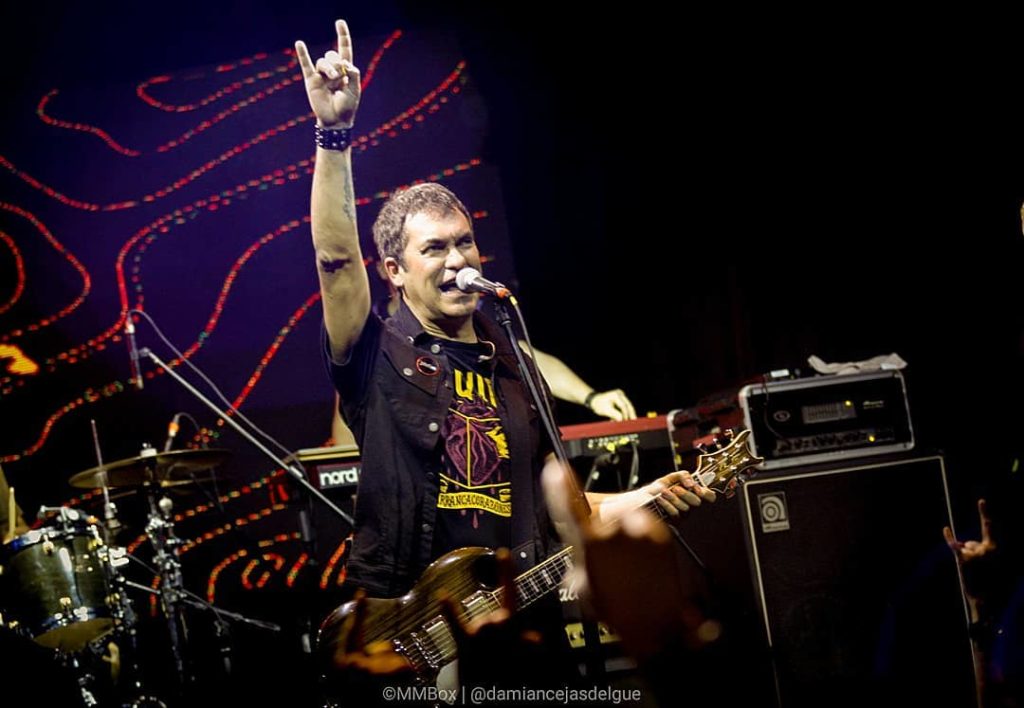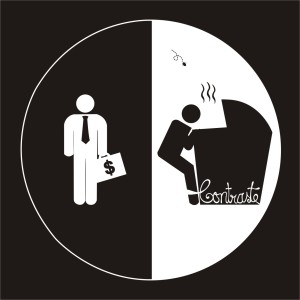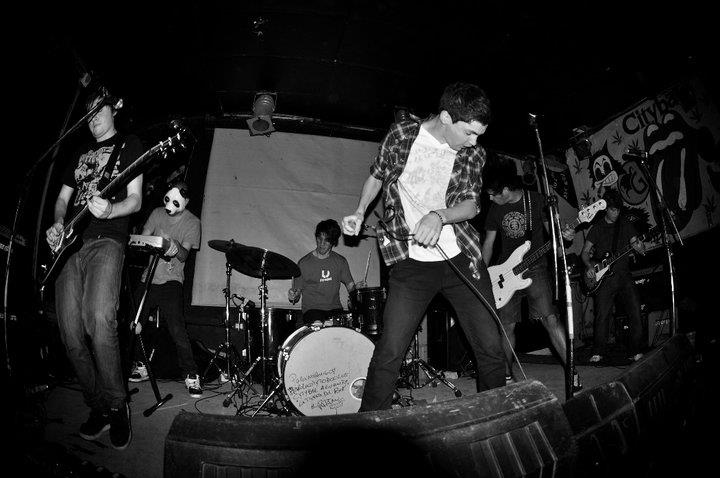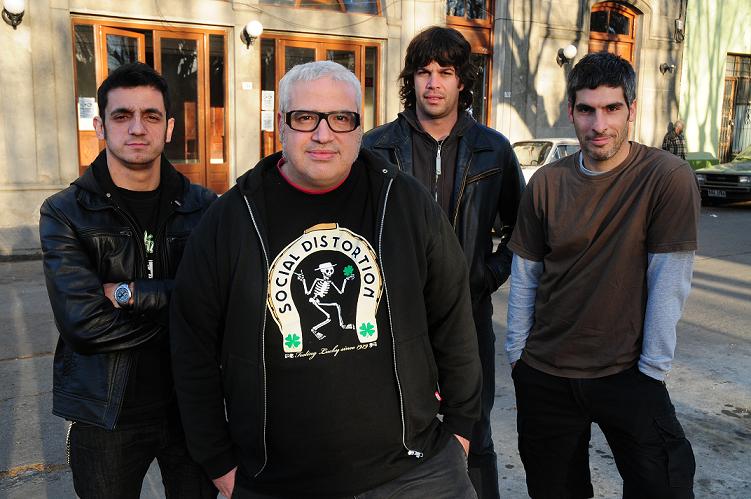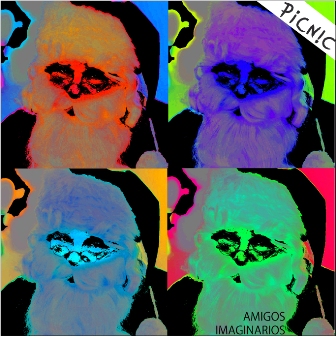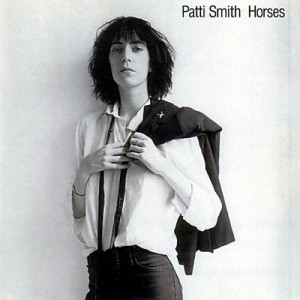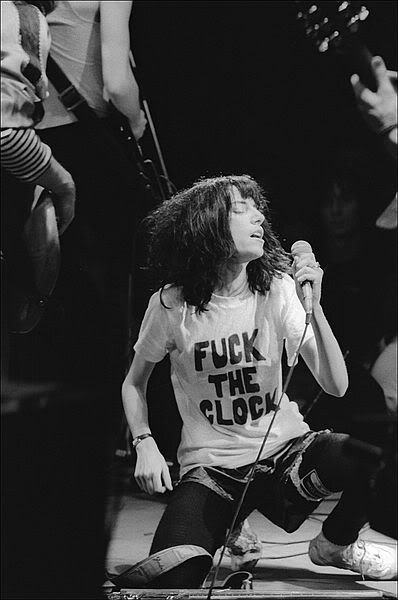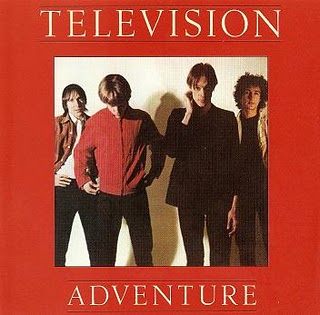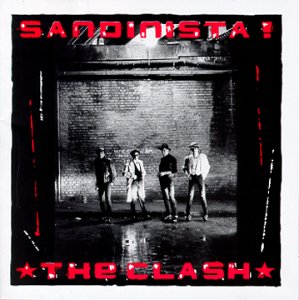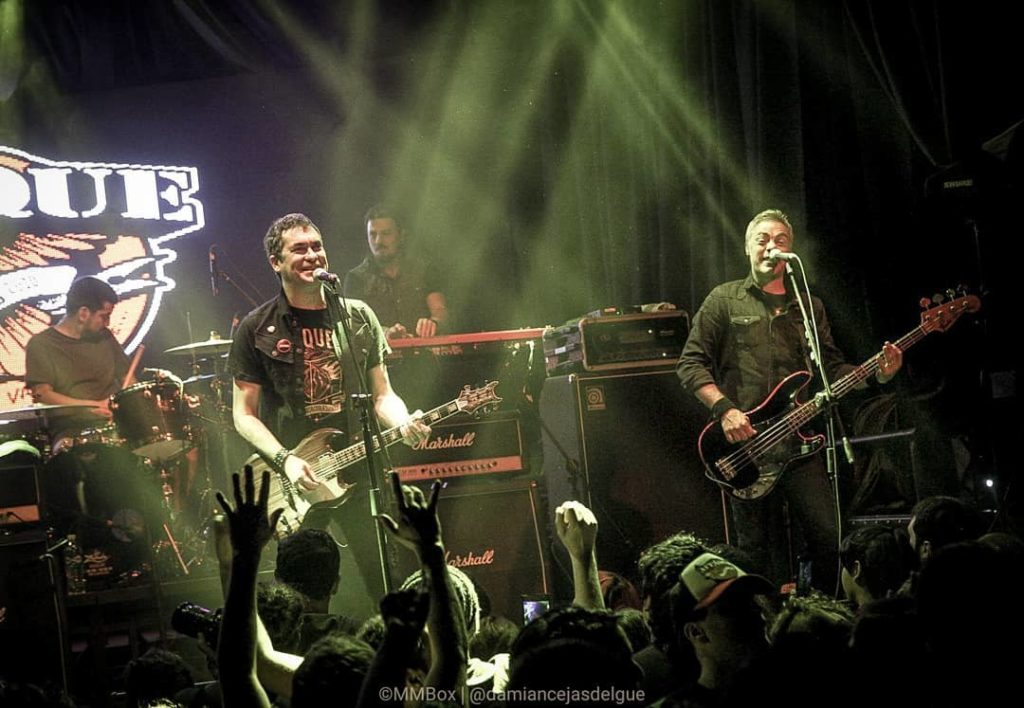
(Fotografía: Damián Cejas Delgue)
Luciendo una remera de “Arrancacorazones”, Mariano Martínez salió a escena acompañado por el baterista Leonardo De Cecco y el bajista Luciano Scaglione en el entorno de las 21:30 horas, luego de que la banda uruguaya Subliminal dejara un clima emocional perfecto para el público que supo colmar la capacidad de Montevideo Music Box anoche.
Si bien la presentación se realizaba en el marco de la gira promocional de “Triángulo de Fuerza”, lo que realmente motivaba el encuentro era festejar los 32 años de actividad ininterrumpida de la banda. El propio Mariano lo subrayó en una de sus primeras intervenciones, al acotar que éste era un show “para los verdaderos seguidores” del grupo – aquellos que comulgan con Attaque desde sus primeras presentaciones en La Factoría, mítico escenario montevideano de la década de los 90s.
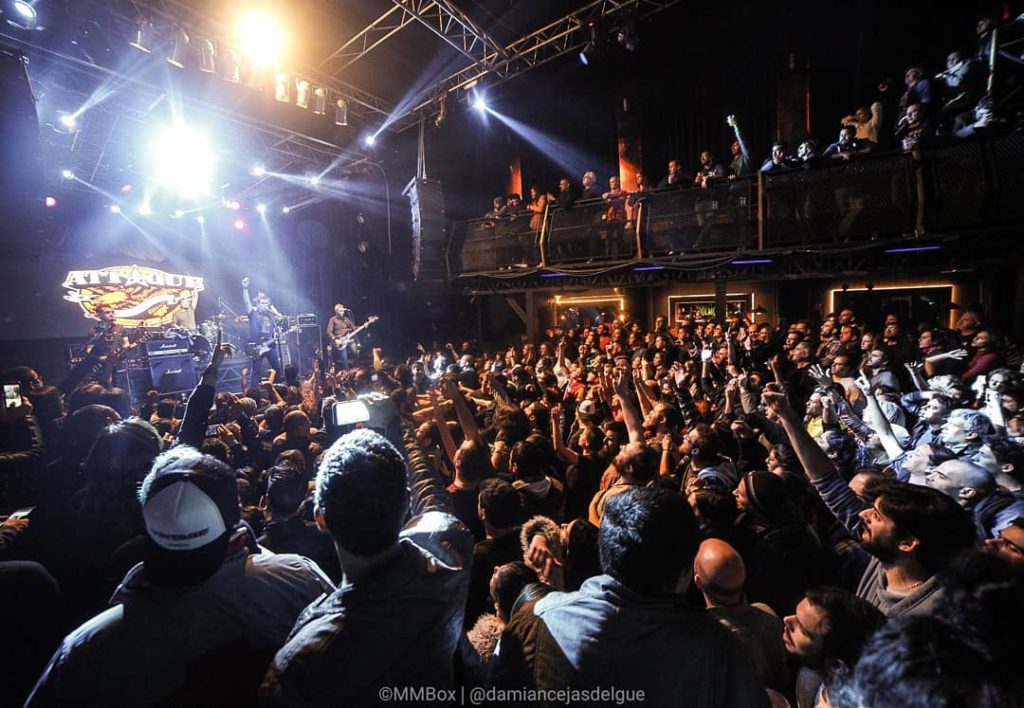
La banda comenzó del modo más contundente posible con “Espadas y Serpientes”, y (como es costumbre) culminó con “Donde Las Águilas Se Atreven”, luego de más de dos horas de música. Pero la euforia del público fue tal que ofrecieron una canción más, para (en palabras de Mariano) terminar “con un buen pogo”: el cover de “No Me Arrepiento de Este Amor”, una de sus versiones más mentadas junto a “Por Qué Te Vas” y “Dame Fuego”, la cuales ésta vez lamentablemente no fueron parte del set. Pero la que sí incluyeron (y significó otro punto álgido) fue “Amigo”, de Roberto Carlos.
El espectáculo se distinguió por la alternancia de temas nuevos y viejos, como subrayando que la banda no tiene un antes y un después, sino que vive la experiencia que inició en 1987 como un continuo, indistintamente de los miembros que se desvincularon con el devenir del tiempo (que incluyen no solo a Ciro Pertusi sino también a su hermano Federico, quien era el vocalista original del grupo, y músicos como el bajista Adrián Vera).
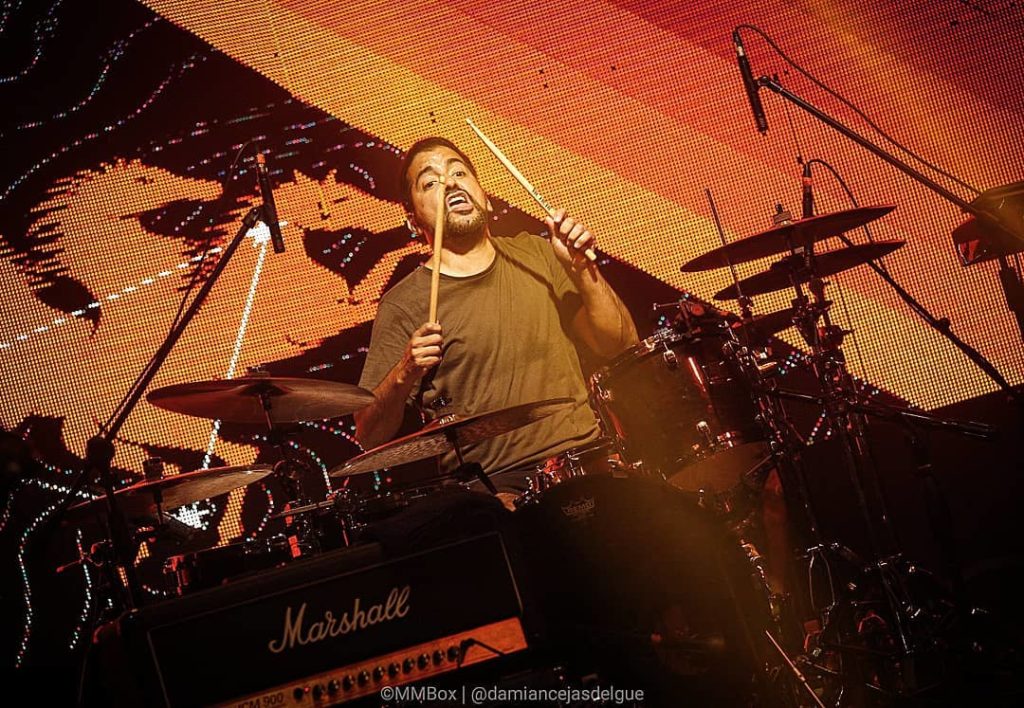
En total, la banda interpretó más de 25 canciones, incluyendo “América”, “Western”, “Suerte”… también incluyeron su genial cover de “El Jorobadito”, canción de Los Auténticos Decadentes que hacía mucho no escuchaba en vivo, y eché un poco de menos los vientos (el soporte en vivo era brindado por una segunda guitarra, y un teclado). “Beatle” llegó cerca del final, junto a “Hacelo Por Mí” y “Arrancacorazones” – dos hits radiales de épocas distintas, pero que encarnan las dos facetas más instantáneas del grupo, y que señalan los dos momentos de mayor masividad de su carrera.
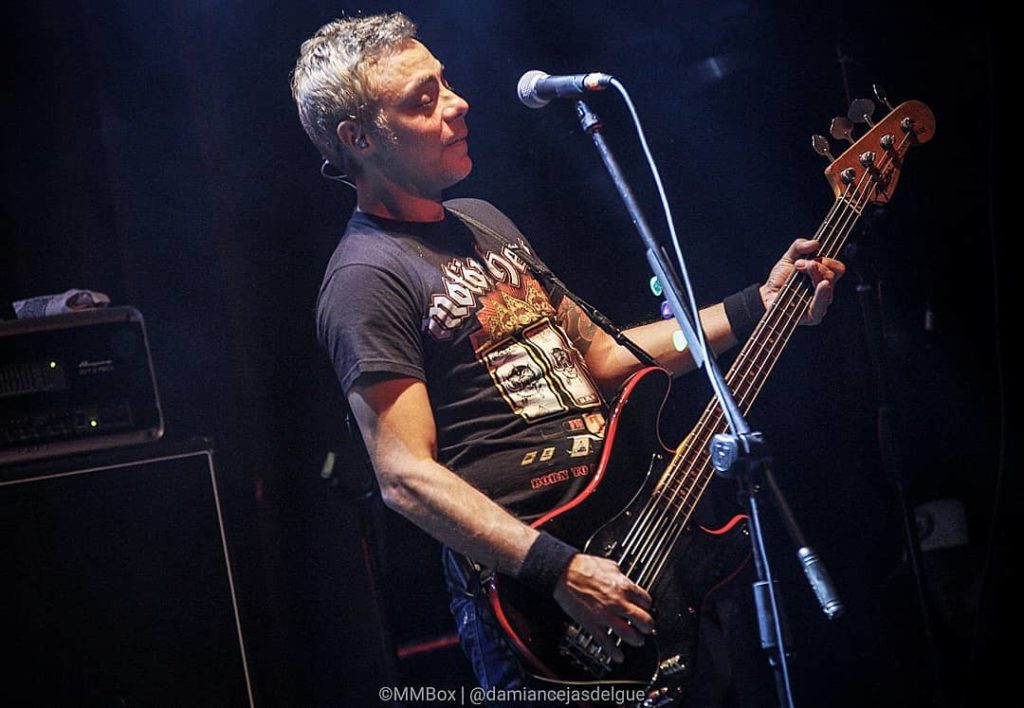
Las canciones de “Triángulo de Fuerza” funcionaron bien en el escenario, y la secuencia aportó a su efectividad – por ejemplo, “Como Salvajes” estaba inserta entre “Chicos y Perros” y “Antihumano”, mientras que “María” estaba contextualizada entre “Amigo” y un fragmento de minuto y medio de “Setentista”. Y “Lobotomizado” obró como la contracara de “El Cielo Puede Esperar”. En ese sentido, el grupo da cuenta de un muy certero entendimiento de cómo construir y mantener una experiencia estética que en ningún punto aliene a sus seguidores más tradicionales. Y me parece valioso destacar que supieron mantener esa dinámica intacta aún cuando el público cobró un rol integral, como cuando coreó efusivamente las primeras estrofas de “Hay Una Bomba En El Colegio”, llevando a la banda a revisitar su disco debut.
Algo que sin dudas tuvo injerencia sobre la intensidad con que se vivieron hasta los momentos más comedidos fue la fuerte presencia argentina en el público, posibilitada por el fin de semana largo en la vecina orilla. A los efectos, eso dotó al concierto de un carisma que no es inherente a una audiencia esencialmente local – imaginen solamente lo que fueron los cánticos motivados por la dedicatoria de “Chicos y Perros” a “todos los políticos corruptos”…
Mención especial para un tramo en medio del concierto anunciado por Mariano como “un regalo para los verdaderos seguidores”, y que consistió en “Frente Al Espejo”, “El Camino” y “Suerte” – dos canciones del último disco de Ciro con la banda (“Karmaggedon”, 2007) y una del fantástico “Radio Insomnio” de 2000, interpretadas con una emoción sostenida que resultó en la clase de comunión musical que uno asocia con la música punk en su expresión más vital y originaria.
He tenido la fortuna de ver a Attaque en contextos muy disímiles, incluyendo la gira conmemorativa de “El Cielo Puede Esperar” en ésta misma sala en 2015, brindando un set soñado para cualquiera que tuvo al grupo como la banda sonora de su juventud. Pero el concierto de anoche tuvo una emotividad y (sobre todo) una relevancia muy especial, que no hizo más que subrayar la vigencia del grupo, y renovar el deseo latente en el corazón de todos sus fans de que siempre habrá “un lugar para estar/con vos una vez más”.
